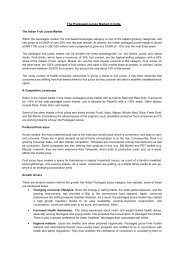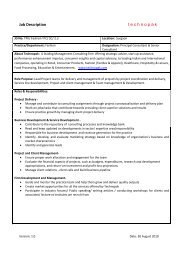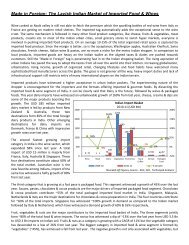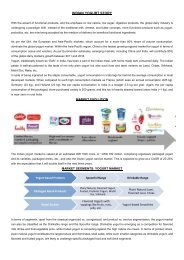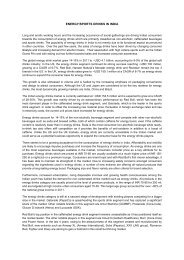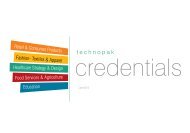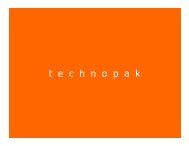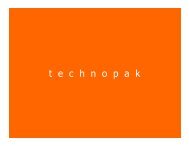a quarterly report by - Technopak
a quarterly report by - Technopak
a quarterly report by - Technopak
Create successful ePaper yourself
Turn your PDF publications into a flip-book with our unique Google optimized e-Paper software.
perspective<br />
a quar terly repor t <strong>by</strong><br />
Volume 02 / 2009<br />
| Volume 02<br />
Overview<br />
With the turn of the century, the dynamics of work, health and life have undergone a sea change. Every<br />
sphere has seen growth and opportunities in leaps and bounds with newer and better ways of doing things<br />
and also doing altogether newer things. The emphasis is shifting towards improving efficiency, precision<br />
and reducing time and cost.<br />
Although this wave of change has swept across every industry, such dynamism and corporatization has<br />
completely changed the face of the healthcare industry. While there are an increasing number of patients,<br />
there is also an ever-increasing disease profile and burden. The disease pathway has become much<br />
more complex and not just limited to diagnosis and treatment. On the other hand, the implementation<br />
of information management systems has made the operation and administration of a hospital more<br />
professional and business-like.<br />
Over the last decade input costs have gradually increased, however due to increased competition<br />
Heathcare Providers are unable to pass this burden onto patients in the same proportion. This presents<br />
Hospital Administrators with a complex task of not only streamlining existing operations but also providing<br />
flexiblity for future changes in the business model. Hence, now more than ever, with rising demand and<br />
unprecedented growth of the sector, there is a growing need to come up with newer models to improve<br />
operational efficiency and make processes, infrastructure and our outlook to management more lean and<br />
specific.<br />
From the softer skills of Customer Relationship Management (CRM) to the core activities of Revenue Cycle<br />
Management (RCM), hospitals are undergoing a complete overhaul of how they do business and more<br />
importantly focussing on ‘who they do business for’.<br />
Exhibit 1<br />
Documentation<br />
Paper Records<br />
Electronic Medical<br />
Records<br />
Mode of payment<br />
Out of Pocket<br />
Third-Party<br />
41 | Building Operational Efficiency in Healthcare Delivery<br />
The Ongoing Transformation in Hospitals<br />
Public Relations<br />
Doctor - Patient<br />
relationship<br />
Marketing / CRM<br />
Quality<br />
Sporadic quality<br />
checks<br />
Accreditation<br />
Hospital Financial<br />
Operations<br />
Accounting<br />
Revenue Cycle<br />
Management<br />
Human Resources<br />
Low Employee<br />
Participation<br />
Active Employee<br />
Engagement<br />
Customization<br />
Mass Approach<br />
Personalised<br />
Care



